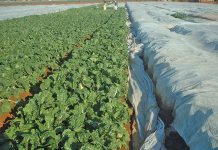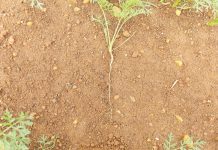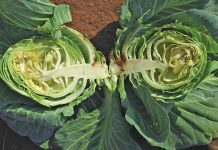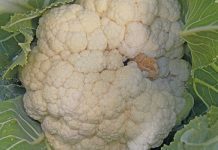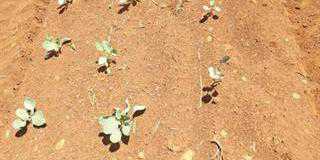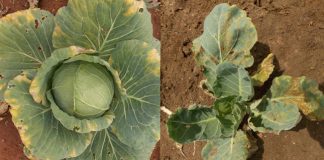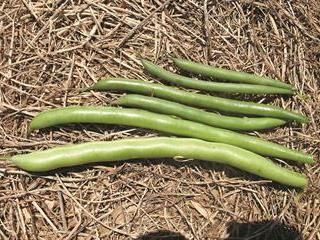
The name comes from the showy scarlet flowers. With dry beans, the breeding emphasis is on yield, eating quality and size of the bean seeds to suit a range of culinary uses. Green beans are bred for pod quality and are less fibrous, and the seeds are not fully developed at the harvesting stage.
Pods may be green, yellow, purple, red or streaked, whereas the seeds may be white, black, red, brown or mottled. The seeds of most green bean varieties are white, a requirement of the processing industry. White seeds are less hardy than coloured seeds, and this shows itself when planting in adverse conditions.
Green beans are still sometimes referred to as ‘string beans’ as they originally had a ‘string’ along the seams. I remember as a child having to remove these for my mother before cooking. They have thankfully been bred out, but a throwback appears from time to time.
Snap beans and runner beans
Green beans are further divided into two groups according to growth type. By far the most popular is the short growing type, known as ‘bush beans’, ‘French beans’, ‘dwarf beans’ or ‘snap beans’. The latter name comes from the sound they make when bent and broken. Pod lengths vary from 9cm to 20cm, with a diameter of 6mm to 12mm. The finer types are usually served whole. Pods may be round, oval or flat.
The second group is the pole beans, also referred to as ‘runner’ or ‘climbing’ types. These tend to be more popular with home gardeners and are sometimes grown under protection. Yield is generally higher than that of short growers, and they are harvested over a much longer period. This makes them highly suitable for home gardeners.
Many green bean varieties have long pods. Where markets prefer these, growers are forced to grow pole beans as the pods would otherwise touch the soil.
Limited options
Unfortunately, the registered pole bean varieties in South Africa are not particularly high- yielding and not as tasty or fibreless as many of the other varieties available on the world market. Moreover, two factors – the cost of variety listing and SA legislation that allows growers to keep seed for re-planting – mean that new improved varieties are unlikely to be registered.
The best sources for seed for the home gardener are growers who sell heirloom seeds and seed savers. Many pole bean varieties have a superior flavour to that of short growers, which is why discerning customers in some countries insist on this type.
Pole beans require structures for the beans to grow on, and the cost and effort of providing these put many growers off. In Taiwan, with its hot, frost-free climate, farmers grow pole beans in winter and then use the same bamboo structures to grow yard-long beans in summer when it is too hot for P. vulgaris.
Yard-long beans are a different genus (Vigna) and, although not as tasty as conventional green beans, are the only option at times when climate is a limitation. Green beans are self-pollinating and the stigma and pollen-bearing anthers are encased in a coil of petals.
Cross-pollination to start breeding new varieties is an intricate procedure. Carpenter bees (incorrectly called bumble bees in South Africa) have developed the behaviour of clinging to the flower and extending the coil between their hairy rear legs. In doing so, they collect pollen and can cause cross-pollination. Breeders should take care to maintain the purity of each variety.


